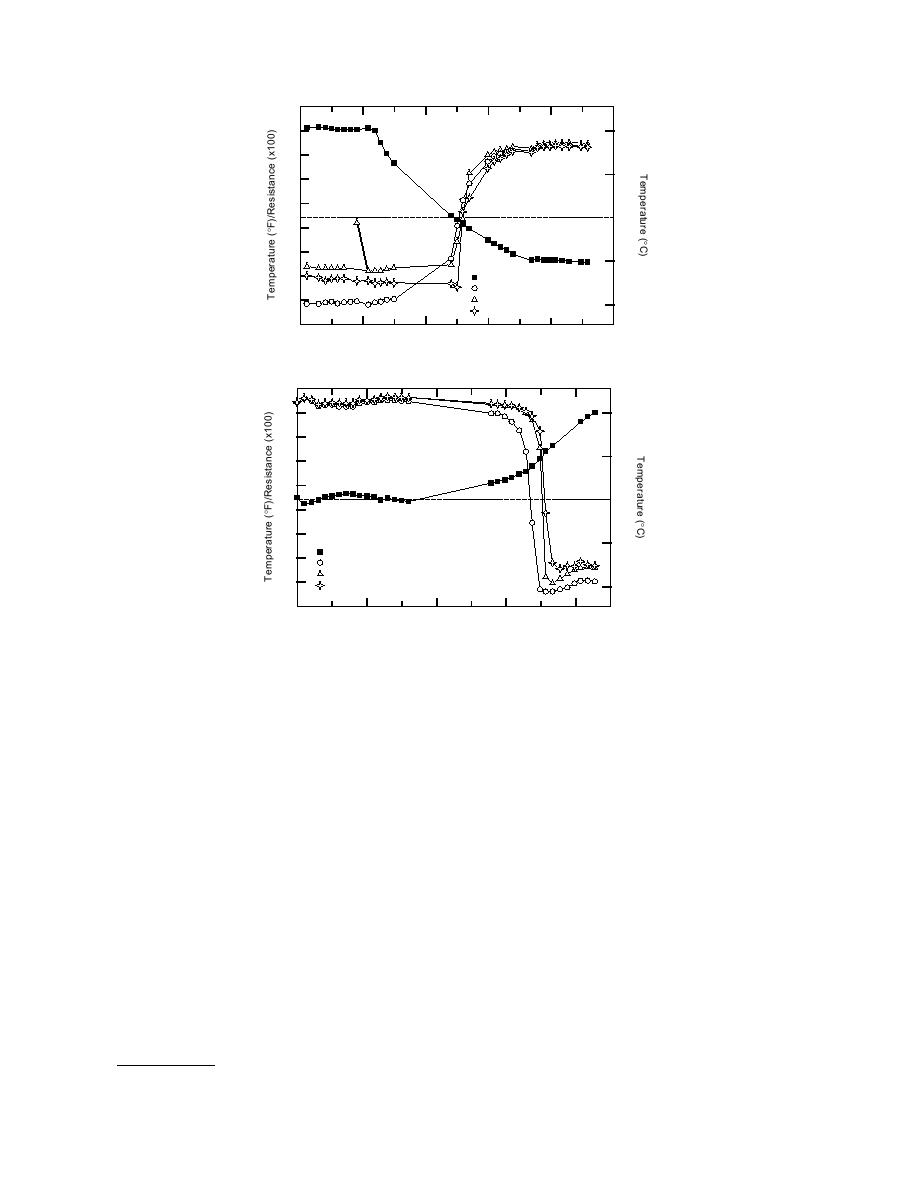
55
10
50
45
5
40
35
0
30
25
5
20
Temperature
Resistance @ 19 inches
Resistance @ 21 inches
15
10
Resistance @ 23 inches
10
10/25/87
11/04/87
11/14/87
11/24/87
12/04/87
12/14/87
a. Soil freezing.
55
10
50
45
5
40
35
0
30
25
5
Temperature
20
Resistance @ 19 inches
Resistance @ 21 inches
15
Resistance @ 23 inches
10
10
12/29/87
01/08/88
01/18/88
01/28/88
02/07/88
b. Soil thawing.
Figure 27. Soil resistance changes in silt. (After Atkins 1989.)
was that the meltwater that falls onto the soil
(0.08 cm/hr), much less than the 0.5 in./hr (1.3
when the panels are heated seeped down be-
cm/hr) required for the frost to penetrate be-
tween the RGs and the soil to a depth of 4 to 6 in.
tween two ring pairs in 1 hour (the time between
(10 to 15 cm). The rings and thermocouples then
samples). Knuth* reported that this erroneous re-
measure the resistance and temperature of this
sponse was likely caused by a capacitance prob-
water. Atkins (1989, 1990) discusses the problem
lem in the cable leading from the RGs. I used the
of water seepage around an RG and suggests
data from only one of the paired ring pairs, which
burying the RG so that its top is 6 in. (15 cm)
reduced the resolution for locating the frost line
below the soil surface. However, I need to mea-
from 0.5 to 1.0 in. (1.3 to 2.5 cm) for these tests.
sure frost penetration down from the soil surface,
Future tests will be run with the RGs wired differ-
so in future tests I plan to cover the top of the RGs
ently to avoid this problem.
with plastic before removing the panels to keep
Atkins (1989, 1990) points out that the general
the meltwater away from them.
shape of the temperature and resistance curves
Freeze at RG D was less intense than at RG C
during freeze and thaw should be similar (Fig.
(Fig. 20). RG C is located near two walls. Maxi-
27). However, Figures 14 and 19 show a precipi-
mum heave always occurred at profiles 3 and 5 in
tous drop in soil resistance and an instantaneous
the middle of the bin, the minimum always at 1
rise in temperature at the very beginning of T1
and 7 nearer the walls, and more soil water froze
and T2. Obviously, ice in the soil does not thaw as
in the middle of the bin than nearer a corner. Heat
quickly as these figures suggest. The problem
penetration into the bin may have been greater
nearer the bin corners because of the proximity to
the two walls. Profile measurements during fol-
* Personal communication, 1995.
27



 Previous Page
Previous Page
